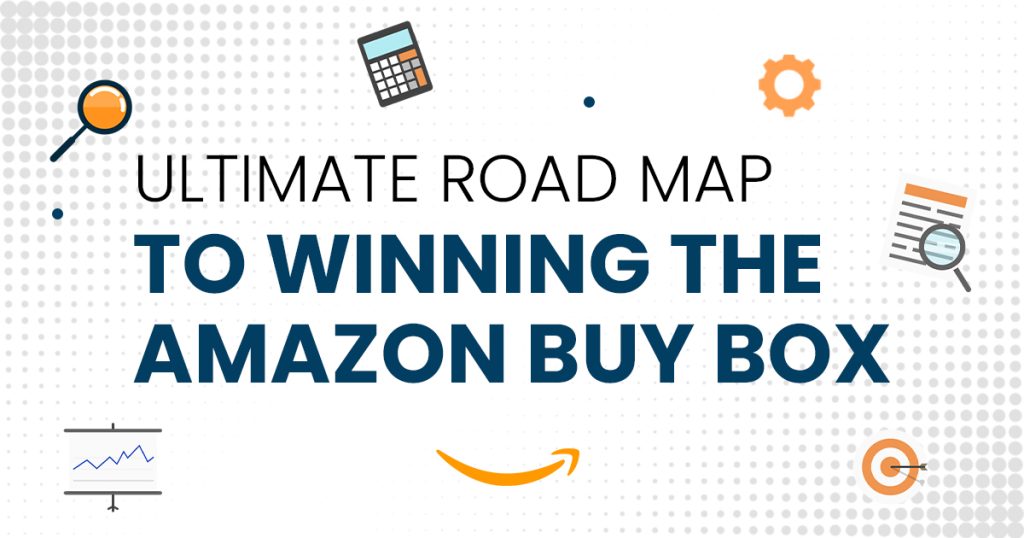Winning the Buy Box every time is the ultimate goal for Amazon Professional sellers. The Amazon Buy Box, the area to the right of the product page that contains the “Add to Cart” call to action, generates a whopping 80+% chunk of Amazon’s entire sales. For this reason, Amazon third-party sellers are fighting tooth and nail just to land their products in the Buy Box.
Amazon applies a complex algorithm to determine which seller gets the best placement. Nonetheless, Fulfilled by Amazon (FBA) vendors are often the ones that get featured in the Buy Box since Amazon gives them (including itself) perfect scores for shipping options, delivery speed, and customer service. FBA retailers have the advantage over independent sellers in these criteria.

Needless to say, Non-FBA merchants have to work harder to catch up with FBA sellers. They can go head to head and level the playing field by following this straightforward guide to Buy Box success.
1. Retain a High Seller Approval Rating.
Primarily, sellers must exhibit good performance to become Buy Box eligible. Sellers are rated positively when they meet or exceed online shoppers’ expectations. To secure high approval ratings from customers, a seller must:
Keep product images and descriptions accurate;
Most customers rely on product images and descriptions to make their purchase decisions. Therefore, it is crucial for the seller to use high-quality and accurate images as well as correct product description that includes color, size, material, and inclusions to represent its products. Any inconsistencies to the actual item received by the shopper can create a negative impact on the seller’s customer feedback rating.
Deliver fast;
Deliver on time all the time. Any delay is unacceptable to customers.
Respond to inquiries within 12 hours;
Be conscientious in responding to customer inquiries. Customers are appreciative of sellers who are quick to reply and sensitive to their needs.
and Control Order Defect Rate (ODR).
Order defect rate must be kept very low (below 1%). Proper storage, efficient fulfillment, and careful handling of products maintain products’ pristine condition as they reach customers leading to satisfaction and loyalty. However, when a customer receives a damaged or wrong item, this will not only cost sellers return payments or replacements but also negative feedback that will increase ODR.
Accurate representation of products, on-time delivery, prompt customer response, and good quality products will surely draw out positive ratings from customers.
2. Price Competitively.
Though Buy Box metrics consider multiple criteria in selecting the lucky seller, the price also plays a major role in the scoring. Sellers basically sell the same product in the listing, so customers tend to choose the lowest price available. Hence, items featured in the Buy Box and More Buying Choices box are often offered by the sellers with the lowest product price.
Target a minimum and maximum price.
Compute the product landed price (price plus shipping) based on a target maximum and minimum profit. It is essential to consider all the costs involved in the product (COGS, selling and shipping costs, etc.) to avoid incurring losses in pricing the product. Set the lowest landed price that meets the profit goal.
Check out competitors’ prices.
Determine the product’s price position against other sellers using a Price Checker tool such as Amzpecty. Analyze the overall competition to decide how low or high will the product be priced. For tips on competition analysis using a price tracker, read this supplementary article. Then, specify the floor and ceiling prices of the product using a re-pricer to move prices within bounds automatically.
Monitor high-margin products using a Price tracker tool.
Continue tracking prices, particularly for high-margin products using a price tracking tool like Amzpecty. It is important to regularly review minimum and maximum prices and revise them when necessary (e.g. demand increase and supply shortage) for profit optimization.
The more competitive the product price is, the higher the probability of conquering the Buy Box.
3. Maintain the Right Inventory Stocking Level.
A seller loses its chance to win the Buy Box once its stock quantities run out. Having the right amount of inventory ensures that sales will be uninterrupted and opportunity losses are avoided. Sellers should maintain an inventory stock level according to sales patterns. To prevent product stockouts, a seller estimates its reorder point and safety stock quantities mainly by knowing the daily demand quantity.
Check competitors’ stock quantities.
There is only one convenient way to check other sellers’ available quantities daily — using a quantity checker like Amzpecty. All sellers’ held and sold quantities are tracked daily for up to 60 days. Awareness of the product’s overall supply on Amazon will give the seller a heads-up on whether to hold off or expedite reorder.
Evaluate the trend and forecast the demand.
Understand the sales trend and deduce the demand pattern. Use the information provided by Amzpecty to estimate the number of days to take before the product becomes out of stock. Note that the data can also be exported in a CSV format to forecast product demand using Excel.
Replenish inventory stocks before stockout.
Having calculated the product demand and predicted the time of supply shortage, a seller can adjust its reorder point and buffer stock quantity accordingly. Restocking ahead of stockout guarantees smooth sailing sales and a lasting Buy Box experience.
The more stock quantities the seller has, the more likely it stays in the Buy Box.





